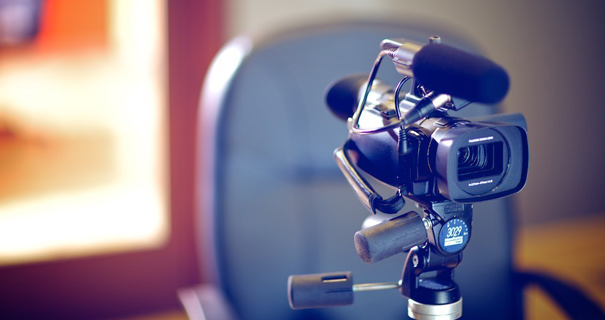The Power of Visuals in Test Presentations for a Winning Debate
The combination of visuals in test discussions has emerged as a critical consider effectively connecting intricate arguments to jurors. By using numerous kinds of aesthetic aids-- be it diagrams, photographs, or animations-- lawyers can enhance understanding and retention, eventually shaping the court's assumption of the instance. This method not just makes clear elaborate narratives however additionally develops an emotional resonance that can affect decision-making. As we discover the subtleties of this approach, it ends up being necessary to think about how details kinds of visuals can make a considerable distinction in trial results. What functional techniques might lawyers employ to optimize this potential?
Significance of Visuals in Trials
In many legal settings, visuals play a critical role in boosting the performance of trial presentations. The combination of visual elements can significantly influence jurors' understanding and retention of intricate details, thus forming their perceptions and choices. Visuals, such as charts, layouts, and photographs, can streamline complex stories, making them extra available and engaging.
Furthermore, the human brain procedures visual details extra effectively than text, which emphasizes the value of incorporating visuals right into legal debates. By translating thick legal principles right into aesthetic styles, attorneys can help with clearer communication, making certain that bottom lines are not ignored during trials.
Additionally, visuals offer to engage jurors on an emotional degree, promoting a link to the case that words alone might stop working to accomplish. The tactical usage of visuals can evoke compassion, triggering jurors to think about the human facets of the instance.
Inevitably, the relevance of visuals in tests depends on their capacity to boost clarity, enhance juror involvement, and strengthen the narrative existing. This potent combination is necessary for crafting convincing arguments that reverberate with jurors and influence the outcome of lawful procedures.
Kinds Of Visuals to Make Use Of
Effective trial discussions can substantially benefit from a variety of visual devices that deal with various facets of the situation. trial presentations. Making use of diagrams and charts can properly break down complex info, making it a lot more digestible for jurors. Flowcharts can illustrate the series of occasions, while bar charts might succinctly contrast appropriate information points.

Animations and simulations can also play an essential function, specifically in situations involving technical information or intricate situations. These visuals can dynamically represent procedures or activities, offering quality and engagement that fixed photos might not attain.
Furthermore, infographics integrate text and visuals to summarize necessary details properly. They can provide timelines, stats, and considerable case factors in a visually appealing fashion, making it easier for jurors to adhere to the check my site disagreement.
Enhancing Understanding and Retention

Enhancing understanding and retention throughout trial presentations is essential for making sure that jurors comprehend the crucial elements of a situation. Aesthetic aids function as powerful devices hereof, equating intricate details right into conveniently digestible layouts. By making use of charts, layouts, and infographics, lawyers can streamline intricate information and highlight vital factors that may otherwise be neglected.
Studies have revealed that individuals keep information dramatically much better when it is presented visually. This is particularly significant in a trial setting, where jurors may be overwhelmed by the volume of evidence and testament. By tactically incorporating visuals, attorneys can direct jurors' interest to one of the most vital aspects of the instance, enhancing their understanding and memory of the product offered.

Developing Involving Discussions
Exciting jurors' attention during trial presentations is necessary for sharing an engaging narrative. Engaging presentations utilize aesthetic components to create an unforgettable experience that reverberates with jurors. The critical usage of graphics, animations, and video clips can clarify complicated information, making it more available and relatable.

Furthermore, including storytelling techniques can enhance interaction. Providing evidence in a rational series that develops sob story permits jurors to get in touch with the product on an individual degree. Varying presentation layouts, such as integrating short video clip clips or interactive aspects, can likewise endure rate of interest and focus throughout the test.
Eventually, an engaging presentation cultivates an extra extensive understanding of the instance, making it possible for trial presentations jurors to much better value the debates existing and leading to an extra positive end result.
Study and Success Stories
Many situation researches highlight the substantial impact of visuals in test discussions, showing their capability to affect juror perceptions and eventually the end results of cases. A noteworthy situation entailing a personal injury case illustrated how the usage of a 3D computer animation of the accident scene cleared up intricate details. Jurors reported really feeling more informed and compassionate, dramatically guiding their decision for the plaintiff.
In one more circumstances, a company lawsuits instance made use of infographics to present financial information and timelines, making complex info easily accessible. The visual representation made it possible for jurors to understand the nuances of the situation more efficiently than verbal descriptions alone. trial presentations. Therefore, the court returned a verdict that went beyond the customer's expectations
The compelling visuals not just aided in creating uncertainty but additionally resonated mentally with jurors, leading to an acquittal. These success tales highlight the need of incorporating visuals right into trial discussions, as they boost understanding, retention, and eventually, the persuasive power of lawful debates.
Verdict
Finally, the tactical consolidation of visuals in trial presentations significantly improves jurors' comprehension and retention of complex information. By making use of different types of visuals, lawyers can effectively clarify bottom lines and foster psychological links with the audience. Engaging discussions, sustained by engaging study, demonstrate the profound effect that visuals can have on convincing interaction. Ultimately, the power of visuals serves as a critical component in accomplishing beneficial test end results.